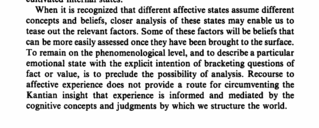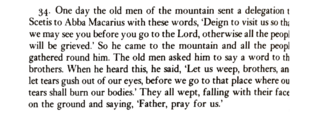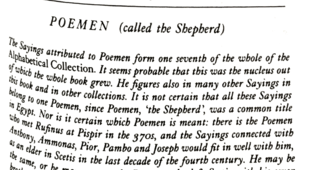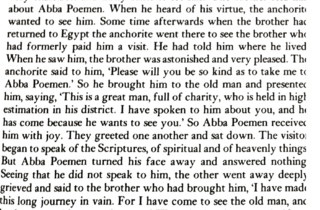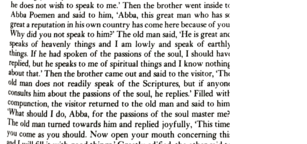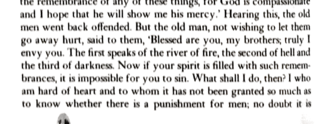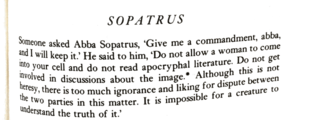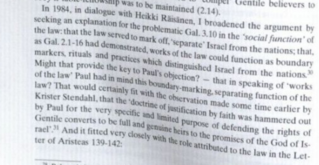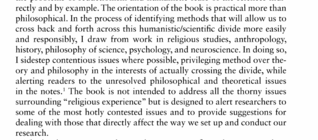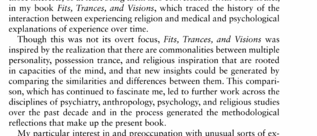Edited, memorised or added to reading queue
on 09-Sep-2016 (Fri)
Do you want BuboFlash to help you learning these things? Click here to log in or create user.
| status | not read | reprioritisations | ||
|---|---|---|---|---|
| last reprioritisation on | suggested re-reading day | |||
| started reading on | finished reading on |
| status | not read | reprioritisations | ||
|---|---|---|---|---|
| last reprioritisation on | suggested re-reading day | |||
| started reading on | finished reading on |
| status | not read | reprioritisations | ||
|---|---|---|---|---|
| last reprioritisation on | suggested re-reading day | |||
| started reading on | finished reading on |
| status | not read | reprioritisations | ||
|---|---|---|---|---|
| last reprioritisation on | suggested re-reading day | |||
| started reading on | finished reading on |
| status | not read | reprioritisations | ||
|---|---|---|---|---|
| last reprioritisation on | suggested re-reading day | |||
| started reading on | finished reading on |
| status | not read | reprioritisations | ||
|---|---|---|---|---|
| last reprioritisation on | suggested re-reading day | |||
| started reading on | finished reading on |
| status | not read | reprioritisations | ||
|---|---|---|---|---|
| last reprioritisation on | suggested re-reading day | |||
| started reading on | finished reading on |
| status | not read | reprioritisations | ||
|---|---|---|---|---|
| last reprioritisation on | suggested re-reading day | |||
| started reading on | finished reading on |
| status | not read | reprioritisations | ||
|---|---|---|---|---|
| last reprioritisation on | suggested re-reading day | |||
| started reading on | finished reading on |
| status | not read | reprioritisations | ||
|---|---|---|---|---|
| last reprioritisation on | suggested re-reading day | |||
| started reading on | finished reading on |
| status | not read | reprioritisations | ||
|---|---|---|---|---|
| last reprioritisation on | suggested re-reading day | |||
| started reading on | finished reading on |
| status | not read | reprioritisations | ||
|---|---|---|---|---|
| last reprioritisation on | suggested re-reading day | |||
| started reading on | finished reading on |
| status | not read | reprioritisations | ||
|---|---|---|---|---|
| last reprioritisation on | suggested re-reading day | |||
| started reading on | finished reading on |
| status | not read | reprioritisations | ||
|---|---|---|---|---|
| last reprioritisation on | suggested re-reading day | |||
| started reading on | finished reading on |
| status | not read | reprioritisations | ||
|---|---|---|---|---|
| last reprioritisation on | suggested re-reading day | |||
| started reading on | finished reading on |
| status | not read | reprioritisations | ||
|---|---|---|---|---|
| last reprioritisation on | suggested re-reading day | |||
| started reading on | finished reading on |
| status | not read | reprioritisations | ||
|---|---|---|---|---|
| last reprioritisation on | suggested re-reading day | |||
| started reading on | finished reading on |
| status | not read | reprioritisations | ||
|---|---|---|---|---|
| last reprioritisation on | suggested re-reading day | |||
| started reading on | finished reading on |
| status | not read | reprioritisations | ||
|---|---|---|---|---|
| last reprioritisation on | suggested re-reading day | |||
| started reading on | finished reading on |
| status | not read | reprioritisations | ||
|---|---|---|---|---|
| last reprioritisation on | suggested re-reading day | |||
| started reading on | finished reading on |
| status | not read | reprioritisations | ||
|---|---|---|---|---|
| last reprioritisation on | suggested re-reading day | |||
| started reading on | finished reading on |
| status | not read | reprioritisations | ||
|---|---|---|---|---|
| last reprioritisation on | suggested re-reading day | |||
| started reading on | finished reading on |
| status | not read | reprioritisations | ||
|---|---|---|---|---|
| last reprioritisation on | suggested re-reading day | |||
| started reading on | finished reading on |
| status | not read | reprioritisations | ||
|---|---|---|---|---|
| last reprioritisation on | suggested re-reading day | |||
| started reading on | finished reading on |
| status | not read | reprioritisations | ||
|---|---|---|---|---|
| last reprioritisation on | suggested re-reading day | |||
| started reading on | finished reading on |
| status | not read | reprioritisations | ||
|---|---|---|---|---|
| last reprioritisation on | suggested re-reading day | |||
| started reading on | finished reading on |
| status | not read | reprioritisations | ||
|---|---|---|---|---|
| last reprioritisation on | suggested re-reading day | |||
| started reading on | finished reading on |
| status | not read | reprioritisations | ||
|---|---|---|---|---|
| last reprioritisation on | suggested re-reading day | |||
| started reading on | finished reading on |
| status | not read | reprioritisations | ||
|---|---|---|---|---|
| last reprioritisation on | suggested re-reading day | |||
| started reading on | finished reading on |
| status | not read | reprioritisations | ||
|---|---|---|---|---|
| last reprioritisation on | suggested re-reading day | |||
| started reading on | finished reading on |
| status | not read | reprioritisations | ||
|---|---|---|---|---|
| last reprioritisation on | suggested re-reading day | |||
| started reading on | finished reading on |
| status | not read | reprioritisations | ||
|---|---|---|---|---|
| last reprioritisation on | suggested re-reading day | |||
| started reading on | finished reading on |
| status | not read | reprioritisations | ||
|---|---|---|---|---|
| last reprioritisation on | suggested re-reading day | |||
| started reading on | finished reading on |
| status | not read | reprioritisations | ||
|---|---|---|---|---|
| last reprioritisation on | suggested re-reading day | |||
| started reading on | finished reading on |
| status | not read | reprioritisations | ||
|---|---|---|---|---|
| last reprioritisation on | suggested re-reading day | |||
| started reading on | finished reading on |
| status | not read | reprioritisations | ||
|---|---|---|---|---|
| last reprioritisation on | suggested re-reading day | |||
| started reading on | finished reading on |
| status | not read | reprioritisations | ||
|---|---|---|---|---|
| last reprioritisation on | suggested re-reading day | |||
| started reading on | finished reading on |
| status | not read | reprioritisations | ||
|---|---|---|---|---|
| last reprioritisation on | suggested re-reading day | |||
| started reading on | finished reading on |
| status | not read | reprioritisations | ||
|---|---|---|---|---|
| last reprioritisation on | suggested re-reading day | |||
| started reading on | finished reading on |
| status | not read | reprioritisations | ||
|---|---|---|---|---|
| last reprioritisation on | suggested re-reading day | |||
| started reading on | finished reading on |
| status | not read | reprioritisations | ||
|---|---|---|---|---|
| last reprioritisation on | suggested re-reading day | |||
| started reading on | finished reading on |
| status | not read | reprioritisations | ||
|---|---|---|---|---|
| last reprioritisation on | suggested re-reading day | |||
| started reading on | finished reading on |
| status | not read | reprioritisations | ||
|---|---|---|---|---|
| last reprioritisation on | suggested re-reading day | |||
| started reading on | finished reading on |
| status | not read | reprioritisations | ||
|---|---|---|---|---|
| last reprioritisation on | suggested re-reading day | |||
| started reading on | finished reading on |
| status | not read | reprioritisations | ||
|---|---|---|---|---|
| last reprioritisation on | suggested re-reading day | |||
| started reading on | finished reading on |
| status | not read | reprioritisations | ||
|---|---|---|---|---|
| last reprioritisation on | suggested re-reading day | |||
| started reading on | finished reading on |
| status | not read | reprioritisations | ||
|---|---|---|---|---|
| last reprioritisation on | suggested re-reading day | |||
| started reading on | finished reading on |
| status | not read | reprioritisations | ||
|---|---|---|---|---|
| last reprioritisation on | suggested re-reading day | |||
| started reading on | finished reading on |
| status | not read | reprioritisations | ||
|---|---|---|---|---|
| last reprioritisation on | suggested re-reading day | |||
| started reading on | finished reading on |
| status | not read | reprioritisations | ||
|---|---|---|---|---|
| last reprioritisation on | suggested re-reading day | |||
| started reading on | finished reading on |
| status | not read | reprioritisations | ||
|---|---|---|---|---|
| last reprioritisation on | suggested re-reading day | |||
| started reading on | finished reading on |
| status | not read | reprioritisations | ||
|---|---|---|---|---|
| last reprioritisation on | suggested re-reading day | |||
| started reading on | finished reading on |
| status | not read | reprioritisations | ||
|---|---|---|---|---|
| last reprioritisation on | suggested re-reading day | |||
| started reading on | finished reading on |
| status | not read | reprioritisations | ||
|---|---|---|---|---|
| last reprioritisation on | suggested re-reading day | |||
| started reading on | finished reading on |
| status | not read | reprioritisations | ||
|---|---|---|---|---|
| last reprioritisation on | suggested re-reading day | |||
| started reading on | finished reading on |
| status | not read | reprioritisations | ||
|---|---|---|---|---|
| last reprioritisation on | suggested re-reading day | |||
| started reading on | finished reading on |
| status | not read | reprioritisations | ||
|---|---|---|---|---|
| last reprioritisation on | suggested re-reading day | |||
| started reading on | finished reading on |
| status | not read | reprioritisations | ||
|---|---|---|---|---|
| last reprioritisation on | suggested re-reading day | |||
| started reading on | finished reading on |
| status | not read | reprioritisations | ||
|---|---|---|---|---|
| last reprioritisation on | suggested re-reading day | |||
| started reading on | finished reading on |
| status | not read | reprioritisations | ||
|---|---|---|---|---|
| last reprioritisation on | suggested re-reading day | |||
| started reading on | finished reading on |
| status | not read | reprioritisations | ||
|---|---|---|---|---|
| last reprioritisation on | suggested re-reading day | |||
| started reading on | finished reading on |
| status | not read | reprioritisations | ||
|---|---|---|---|---|
| last reprioritisation on | suggested re-reading day | |||
| started reading on | finished reading on |
| status | not read | reprioritisations | ||
|---|---|---|---|---|
| last reprioritisation on | suggested re-reading day | |||
| started reading on | finished reading on |
| status | not read | reprioritisations | ||
|---|---|---|---|---|
| last reprioritisation on | suggested re-reading day | |||
| started reading on | finished reading on |
| status | not read | reprioritisations | ||
|---|---|---|---|---|
| last reprioritisation on | suggested re-reading day | |||
| started reading on | finished reading on |
| status | not read | reprioritisations | ||
|---|---|---|---|---|
| last reprioritisation on | suggested re-reading day | |||
| started reading on | finished reading on |
| status | not read | reprioritisations | ||
|---|---|---|---|---|
| last reprioritisation on | suggested re-reading day | |||
| started reading on | finished reading on |
| status | not read | reprioritisations | ||
|---|---|---|---|---|
| last reprioritisation on | suggested re-reading day | |||
| started reading on | finished reading on |
| status | not read | reprioritisations | ||
|---|---|---|---|---|
| last reprioritisation on | suggested re-reading day | |||
| started reading on | finished reading on |
| status | not read | reprioritisations | ||
|---|---|---|---|---|
| last reprioritisation on | suggested re-reading day | |||
| started reading on | finished reading on |
| status | not read | reprioritisations | ||
|---|---|---|---|---|
| last reprioritisation on | suggested re-reading day | |||
| started reading on | finished reading on |
| status | not read | reprioritisations | ||
|---|---|---|---|---|
| last reprioritisation on | suggested re-reading day | |||
| started reading on | finished reading on |
| status | not read | reprioritisations | ||
|---|---|---|---|---|
| last reprioritisation on | suggested re-reading day | |||
| started reading on | finished reading on |
| status | not read | reprioritisations | ||
|---|---|---|---|---|
| last reprioritisation on | suggested re-reading day | |||
| started reading on | finished reading on |
| status | not read | reprioritisations | ||
|---|---|---|---|---|
| last reprioritisation on | suggested re-reading day | |||
| started reading on | finished reading on |
| status | not read | reprioritisations | ||
|---|---|---|---|---|
| last reprioritisation on | suggested re-reading day | |||
| started reading on | finished reading on |
| status | not read | reprioritisations | ||
|---|---|---|---|---|
| last reprioritisation on | suggested re-reading day | |||
| started reading on | finished reading on |
Article 1390443105548
Final Version task management
#productivity
markforster.squarespace.com Read Later The Final Version Perfected (FVP) - Blog - Get Everything Done 8 min read original Thursday, May 21, 2015 at 11:58 This is an amended version of the instructions for the Final Version (FV) time management system. It contains an improved algorithm and a new question. (Chinese Traditional version by Catus Lee - external site) Introduction ~~~~~~~~~~~~~~~~~~~~~~~~~~~~~~~~~~~~~~~~~~~~~~~~ Here are the long-awaited instructions for the Final Version Perfected (FVP) time management system. I don’t know if it’s the best time management system ever devised. What I do know is that it is the best time management system that I have ever used myself. It’s shown itself to be even more resilient, responsive and quick than the Final Version. FV and now FVP are based on my earlier time management systems, particularly the extensive range of AutoFocus and SuperFocus systems developed over the last five years. These were unique in that they
| status | not read | reprioritisations | ||
|---|---|---|---|---|
| last reprioritisation on | suggested re-reading day | |||
| started reading on | finished reading on |
Final Version task management
rithm is primarily based on psychological readiness - this then opens the way to keeping urgency and importance in the best achievable balance. The FVP Algorithm ~~~~~~~~~~~~~~~~~~~~~~~~~~~~~~~~~~~~~~~~~~~~~~~~ <span>The FVP algorithm uses the question “What do I want to do more than x?” to preselect a chain of tasks from the list. What exactly is meant by “want” in this context is deliberately left undefined. There may be a whole variety of reasons why you might want to do one thing more than another thing and all of them are valid.The chain always starts with the first unactioned task on the list. Mark this task with a dot to show that it’s now been preselected. Don’t take any action on the task at this stage.This task then becomes the benchmark from which the next task is selected. For example, if the first task on the list is “Write Report”, the question becomes “What do I want to do more than write the report?” You move through the list in order until you come to a task which you want to do more than write the report. This task is now selected by marking it with a dot and it becomes the benchmark for the next task. If the first task you come to which you want to do before writing the report is “Check Email”, then that becomes the benchmark. The question therefore changes to “What do I want to do mo
| status | not read | reprioritisations | ||
|---|---|---|---|---|
| last reprioritisation on | suggested re-reading day | |||
| started reading on | finished reading on |
Parent (intermediate) annotation
Open itsymptoms are above the neck - sneezing, sore throat, and runny nose - then it’s probably okay to work out. Weidner drew his conclusion from two different controversial studies in which his subjects were actually infected with thecommon cold. <span>Evaluating his subjects in a controlled environment, he determined their symptoms were no worse (or better) for exercising while being ill. In fact, the group that exercised, versus the group that didn’t, reported feeling slightly better after exercising. <span><body><html>
Original toplevel document
Why You Shouldn't Work Out When You're Sickod, then why not. Conversely, the opposite is considered to be true - if you’re really sick (for instance, the flu), you should probably not work out as you could be doing more harm than good. Time to Do a Neck Check <span>According to Thomas Weidner, head of athletic training at Ball State University, you should perform what’s called a neck check. That is, when determining whether or not to exercise, if your symptoms are above the neck - sneezing, sore throat, and runny nose - then it’s probably okay to work out. Weidner drew his conclusion from two different controversial studies in which his subjects were actually infected with thecommon cold. Evaluating his subjects in a controlled environment, he determined their symptoms were no worse (or better) for exercising while being ill. In fact, the group that exercised, versus the group that didn’t, reported feeling slightly better after exercising. Of course there are benefits to working out in general as it relates to our health. Specifically, exercise is a scientifically proven immunity booster. Exercising regularly may help you
Article 1390448872716
It's Not an Option
#productivity
markforster.squarespace.com Read Later It’s Not an Option - Blog - Get Everything Done 4 min read original Thursday, September 28, 2006 at 14:13 Do you have some things in your life which you have no option about doing? Most of us have quite a few. We don’t have much option about getting up to go to work, or at least getting up sometime. We don’t have much option about eating, assuming that we want to stay alive. We don’t have much option about earning some money somehow. It might be an interesting exercise to work out just how many things you have in your life which you really do have no option about. These are the things which you simply have to do, because the consequences of not doing them are too horrendous to face. Many of these are things we have to do every day. They are forced on us by the very necessity of staying alive. Others are forced on us by the circumstances of our lives or the people we live and work with. Some are things we have chosen voluntarily.
| status | not read | reprioritisations | ||
|---|---|---|---|---|
| last reprioritisation on | suggested re-reading day | |||
| started reading on | finished reading on |
It's Not an Option
ive and work with. Some are things we have chosen voluntarily. For instance, if we have chosen to have children, then we have definitely taken on a whole load of things which the average parent has very little or no option about. <span>We have to do the things we have no option about so often that they have become part of the landscape. Whether we feel like doing them or not, because we have no option we get on with them. We get on with them rain or sun, regardless of our feelings, regardless of how tired we are. They have to be done – we have no option. This is very different to how we approach the things we do have an option about. We don’t have to do something like taking exercise, for example, so if we don’t happen to feel like doing it we take the day off exercise. There are a multitude of excuses we can come up with. And then we feel guilty or frustrated because we couldn’t keep up our exercising. If it’s not exercising then it will be something else that we meant to do, wanted to do, but because we had the option of not doing it, we didn’t keep it up. The way to deal with this is to adopt the mental attitude that we have no option. We have no more option about it than we do about getting up or eating. Once we’ve adopted that mindset,
Article 1390453329164
Next Hour System
#productivity
markforster.squarespace.com Read Later The Next Hour of Your Life - Blog - Get Everything Done 2 min read original All about time management and personal organisation Saturday Jul022016 The Next Hour of Your Life Saturday, July 2, 2016 at 7:00 When we think about managing our time we tend to think in terms of what we are going to do in a day or a week or a month. But in fact one of the most useful units of time for time management purposes is the hour. If you focus on what you are going to achieve during the next hour you will have a much closer focus. Hence one of the simplest of all task management systems is to write down what you intend to do over the next hour, and then to do it. There’s no need to time this exactly to the minute. We’re talking about a period of time in the region of an hour. Over the last few days I’ve been experimenting with some ways of doing this and it’s been working really well for me. The rules I’ve standardised on h
| status | not read | reprioritisations | ||
|---|---|---|---|---|
| last reprioritisation on | suggested re-reading day | |||
| started reading on | finished reading on |
Next Hour System
plest of all task management systems is to write down what you intend to do over the next hour, and then to do it. There’s no need to time this exactly to the minute. We’re talking about a period of time in the region of an hour. <span>Over the last few days I’ve been experimenting with some ways of doing this and it’s been working really well for me. The rules I’ve standardised on have been: Start the day by writing a list of what you intend to do over the next hour Do the tasks in order Top up the list at intervals as you go along so it always contains about one hour’s work (there’s no need to be too exact about this). There’s no specific provision for re-entering unfinished or recurring tasks. You can just add them as and when you want to, remembering to keep within the limit of an hour’s work. Non-discretionary work such as appointments and meetings do not count towards the hour, e.g. if you’re going to a two-hour meeting you can put tasks on your list for when it finishes. Finish the day by completing every task remaining. Basically aim to do the tasks in the order you’ve written them down, but if you have a good reason to adjust the order or add or remove tasks out of sequence feel free to do so. Contrary to my normal preference, this is best done electronically. I’m currently using putting each day’s list on a note in Evernote with tick boxes. Evernote has the advantage that I c
